The First World War began on July 28, 1914, when Austria-Hungry declared war on Serbia following the assassination of Archduke Francis Ferdinand.
Most textbooks report on the horrific World War I death toll of 20 million people, but it is also important to examine how the impact of the war led to further loss of life. In the early 20th century, wartime combat transitioned from mainly human- and animal-powered to fossil fuel-powered technologies: trucks, tanks, ships, and airplanes. Accessing and protecting fossil fuel supplies became part of sustaining a powerful military. This shift has caused enormous environmental degradation.
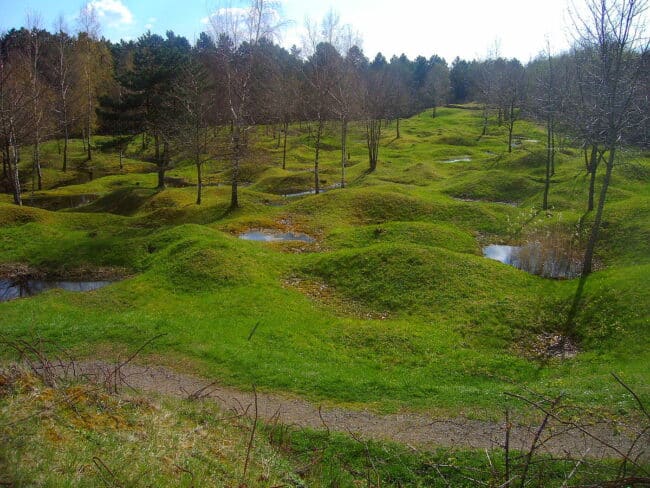
The battlefield of Verdun is part of France’s Zone Rouge, cordoned off since the end of WWI. Source: Oeuvre personnelle, public domain
S. M. Enzler’s 2006 report, Environmental Effects of Warfare: The Impact of War on the Environment and Human Health, explains:
In terms of environmental impact, World War I was most damaging, because of landscape changes cause by trench warfare. Digging trenches cause trampling of grassland, crushing of plants and animals, and churning of soil. Erosion resulted from forest logging to expand the network of trenches. Soil structures were altered severely, and if the war was never fought, in all likelihood the landscape would have looked very differently today.
Another damaging impact was the implication of poison gas. Gases were spread throughout the trenches to kill soldiers of the opposite front. Examples of gases applied during WWI are tear gas (aerosols causing eye irritation), mustard gas (cell toxic gas causing blistering and bleeding), and carbonyl chloride (carcinogenic gas). The gases cause a total of 100,000 deaths, most caused by carbonyl chloride (phosgene). Battlefields were polluted, and most of the gas evaporated into the atmosphere. Read more.
In the EcoWatch article This World War I Battlefield Is a Haunting Reminder of the Environmental Costs of War, Olivia Rosane wrote:
The battle of Verdun was the longest continuous conflict in the Great War, and it so devastated the land it took place on that, after the war, the government cordoned it off-limits to human habitation. What was once farmland became the Zone Rouge, or Red Zone, as National Geographic reported. . . .
It is still one of the most toxic sites in France. The arsenic levels in the soil are 35,000 times higher than normal and some parts of the soil are 17.5 percent arsenic, according to a 2007 study. Little grows there, even now. Read more.
For more people’s history of WWI, see Freedom Struggles: African Americans and World War I by Adriane D. Lentz-Smith.
This event is included on the Zinn Education Project’s Climate Crisis Timeline.

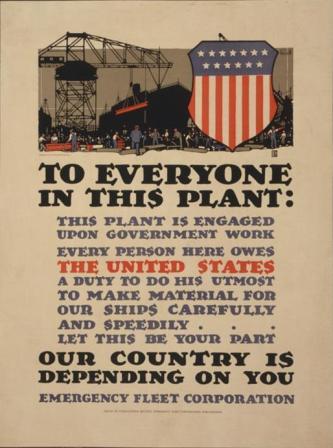
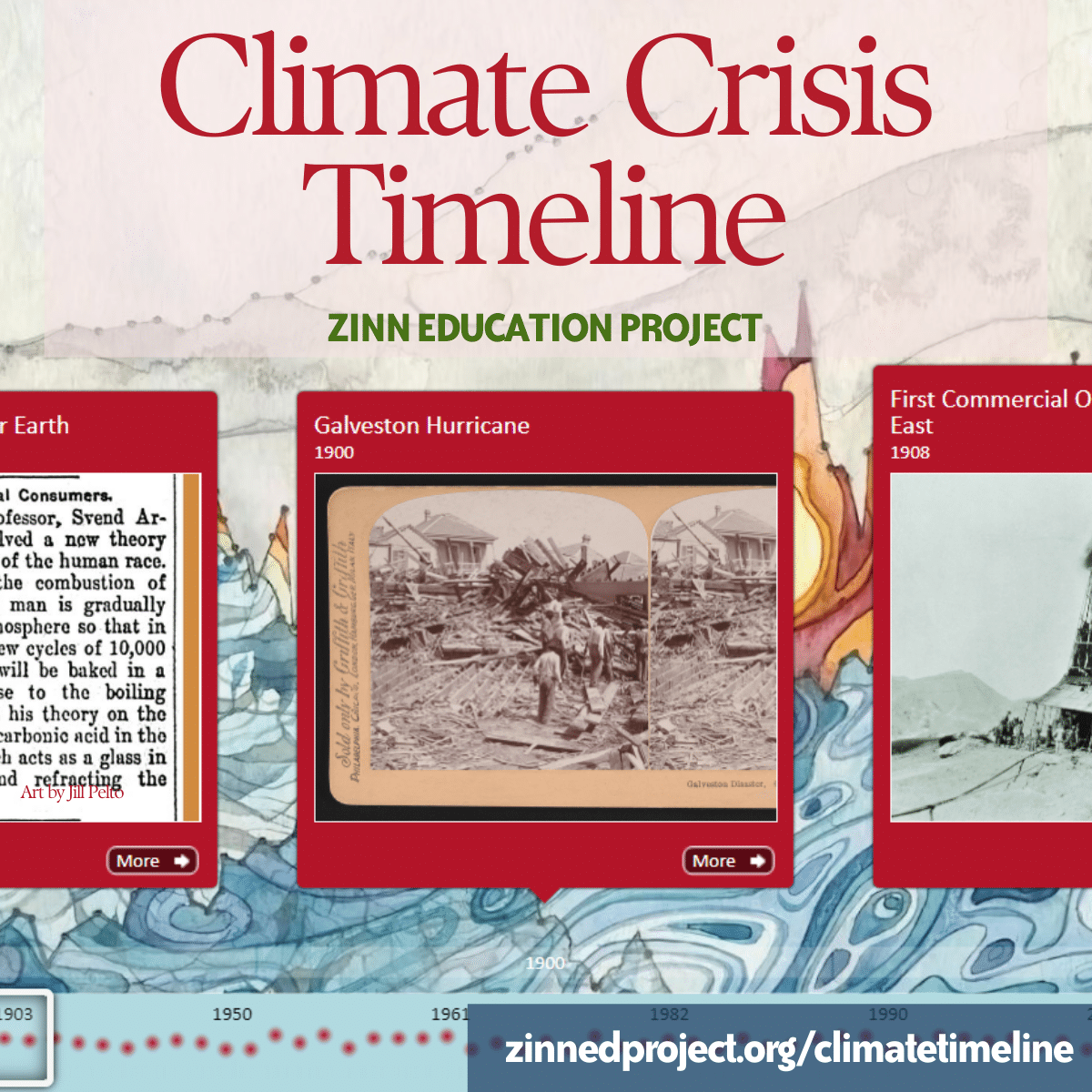

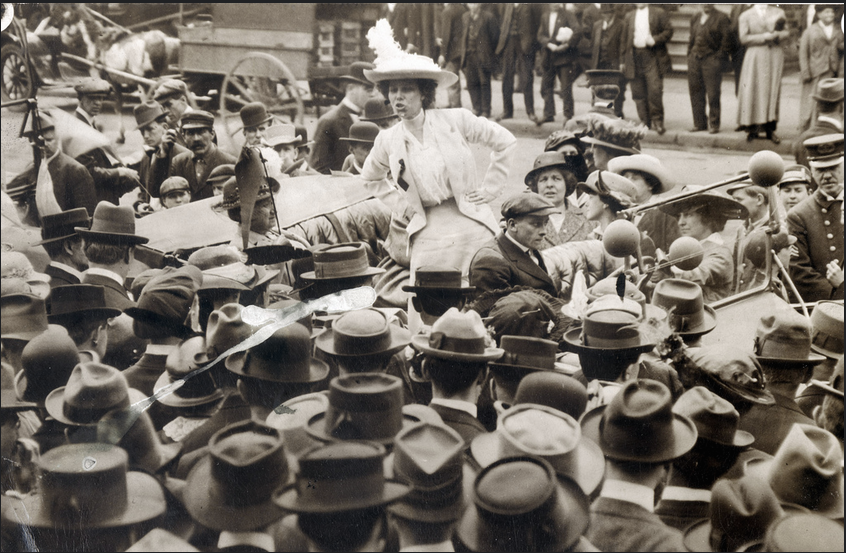
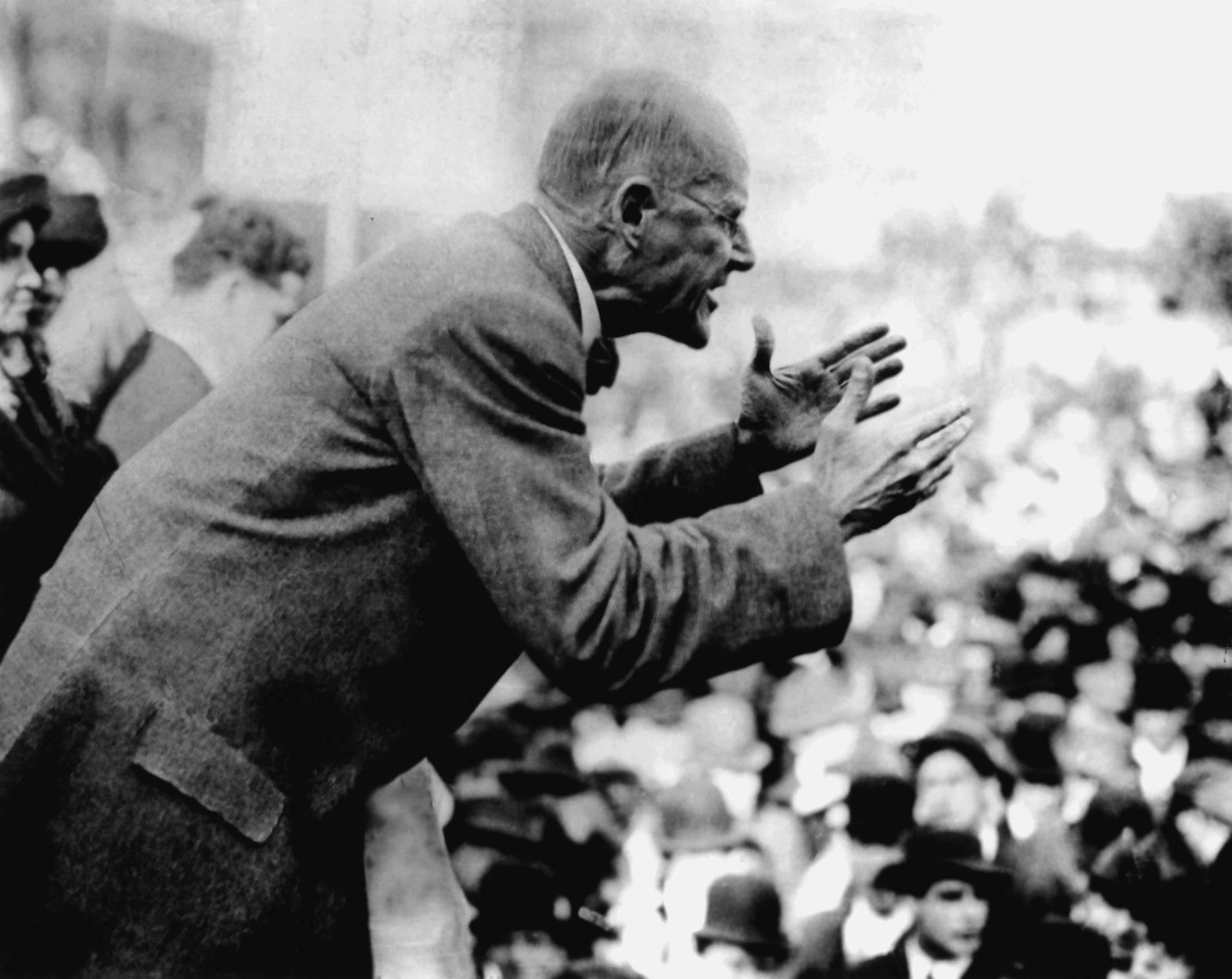





Twitter
Google plus
LinkedIn